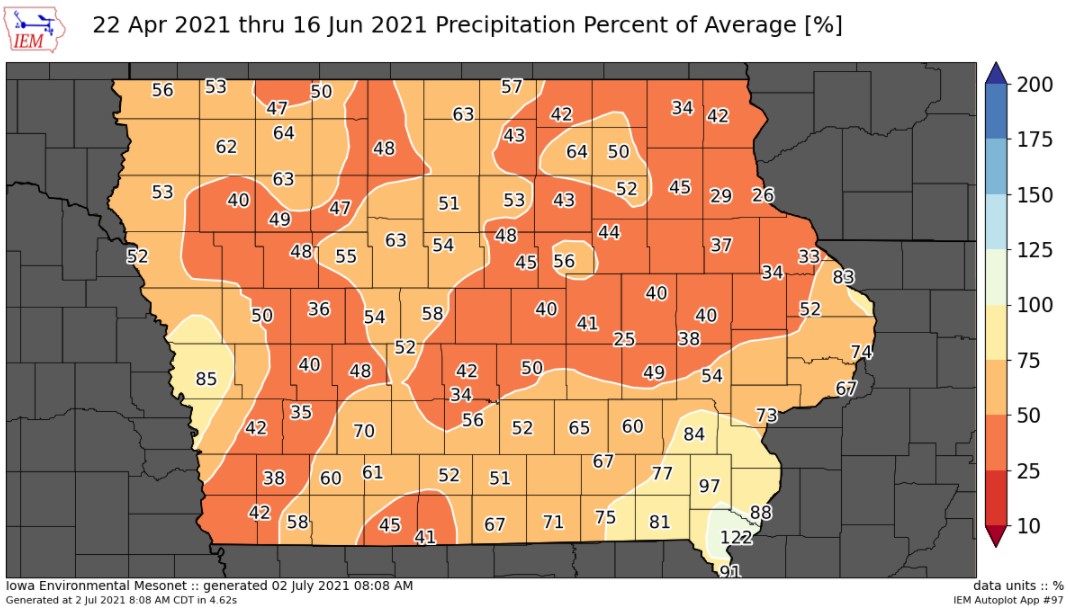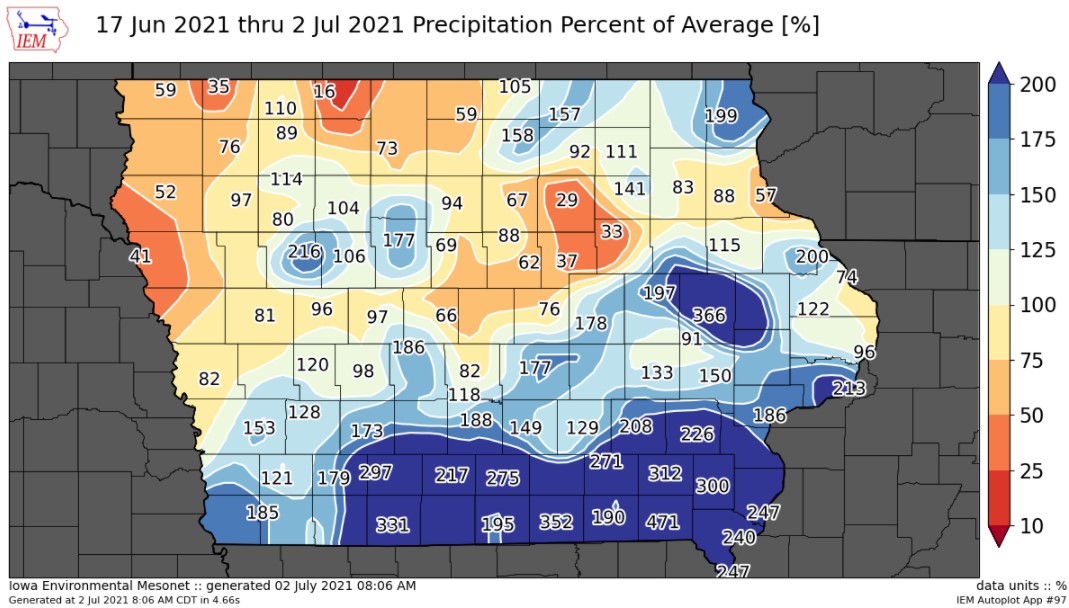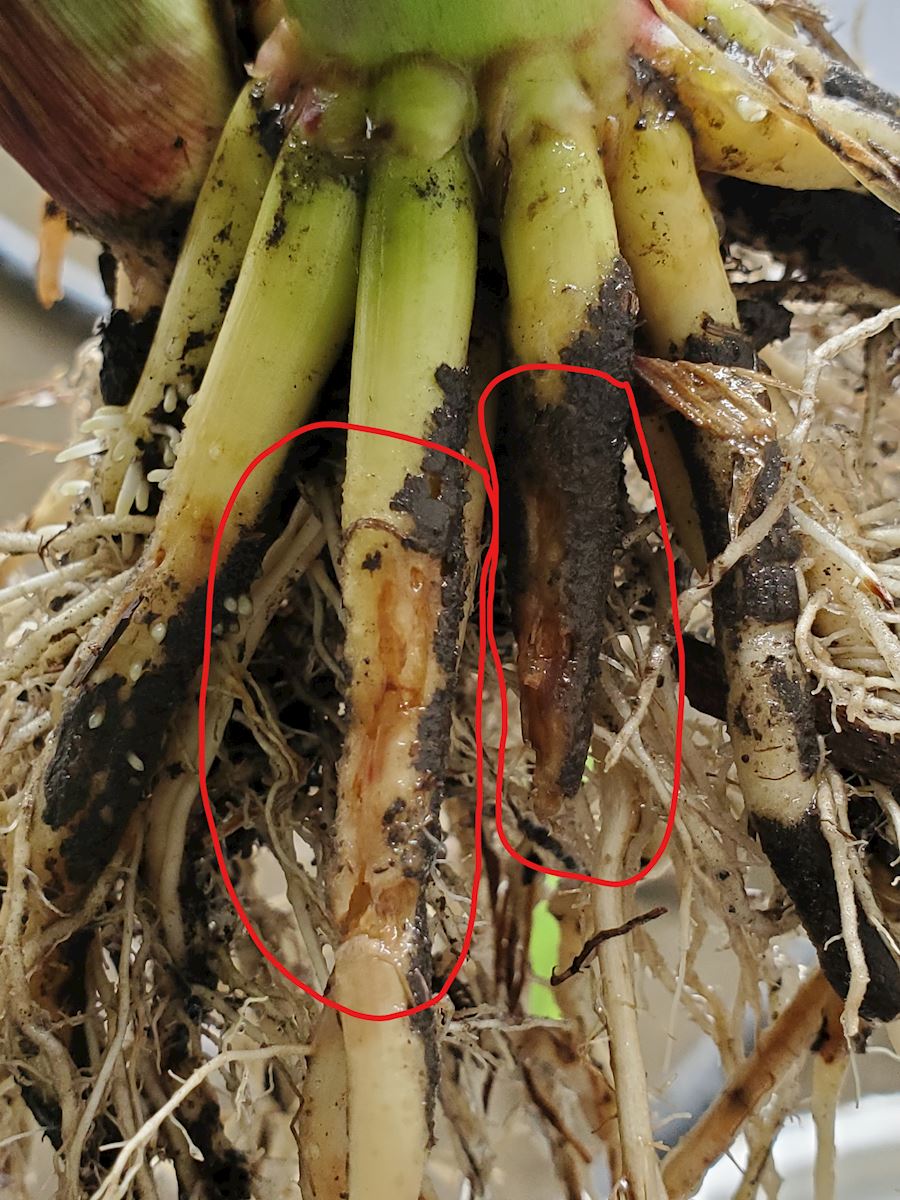July 2nd, 2021
posted
by Andrew Blomme on 7/2/2021
in
Weekly Newsletter

July 2nd, 2021
Weekly Weather Summary
This week two trends of the growing season are starting to differentiate themselves. The maps below will help show these trends. The first map shows precipitation as a percent of average in the state for the beginning of the growing season. If an area is at 100% that means it has received an average amount of rainfall. Any percentage below 100% means that area has received less than average rainfall.

As you can see our area received between 35-40% of normal rainfall for the first 8 weeks of growing season. The crop's water usage was relative low at this point in time, but we still saw some water stress symptomology. The next map show the precipitation as a percent of average for the last two weeks.

This map and current trend look much more optimistic. Over the last two weeks most of our area has received above average rainfall. With spotty showers several nights this week, some localized areas are closer to 150-200% of average rainfall for this period.
Ideally, this trend of above average rainfall will continue through pollination. Daily water usage for a corn crop peaks during tasseling and pollination. A corn crop uses around 1/3" of moisture every day at that point. With tasseling on pace to start in 7-10 days, this recent precipitation trend makes me more optimistic that we will have the supply to meet this upcoming water demand.
Pest Update
Soybean gall midges are back again. Soybean gall midge is a relatively new soybean pest to our area. Midges are most damaging to soybeans in their larval stages. We've observed larval damage on the edges of soybean fields this week. Wilted or dead plants on the end rows of a farm should inspected for soybean gall midge larva. The picture below shows the orange gall midge larva and their typically burrowing type of damage. While larva are easily identifiable by their orange coloring, younger midge larva will be whiter in color.

Corn rootworm larva are becoming more prevalent as the growing season progresses. Rootworms have close to doubled in size from last week and root damage is becoming more noticeable. Last week damage was minimal and very localized. This week root feeding damage is becoming more obvious. The picture below some typical root feeding. The areas of intense feeding are denoted with the red circles. Damage to these nodal roots can make a corn plant less stable and more likely to lodge in adverse conditions. The following link from the University of Wisconsin helps understand different levels of root feeding damage: University of Wisconsin-Evaluating Corn Roots for Rootworm Damage.

More pests will be emerging over the next several weeks. We will keep you up to date as they appear.
Looking Forward
We are on the home stretch for vegetative development in corn. Tassels will start emerging in the next 7-10 days. You've heard me say it dozens of times but here it is again: pollination is the most critical segment of a corn plant's development. The conditions we experience during pollination have an impact on the outcomes we see at harvest. When silks emerge in a week or so it will be important to scout for silk clipping insects primarily Japanese beetles and corn rootworm beetles. We've got an important stretch of crop development ahead of us. Next week's newsletter will cover these topics and other observations from the field.